Christopher Hector enjoys an interview with one of the most influential players in the world of dressage breeding – Eugène Reesink
I’ve always thought it unfortunate that the Dutch decided to name their horses with a letter of the alphabet that was assigned to the year of their birth, rather than using the first letter of the sire, as is the case in Germany and many parts of the world. Thus, despite his dominance of dressage breeding over the past decade, we have no J line for Jazz, though if Johnson (who got the J when he was licensed in Germany) keeps up his current rate of success, we may end up with one…
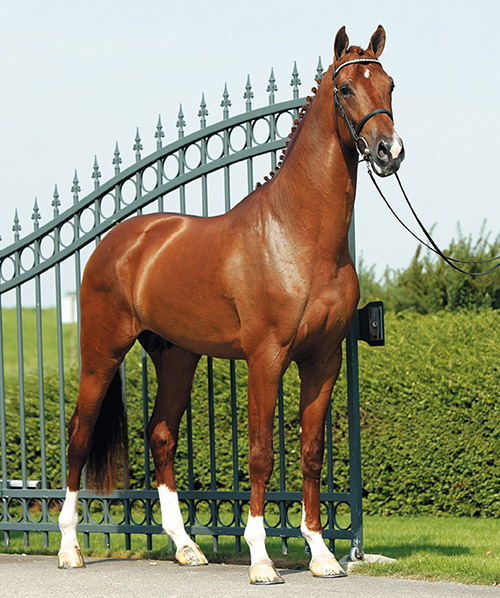
Vivaldi, sire of Vitalis
One of the emerging forces in dressage breeding has been Vivaldi and his son, Vitalis, and because Vitalis and some of his influential sons were produced by Eugène Reesink, a Dutchman who lives very close to the German border, and tends to license his stallions in Germany, the V line is up and running…
(Vivaldi was licensed at the 2005 KWPN stallion show, where all the stallions were given names beginning with V – the other stallion of note to come out of the 2005 crop, Verdi (Jazz / Flemmingh) went on to fame and glory, re-named Johnson) To learn more about Vivaldi and the breeding program that produced him go HERE
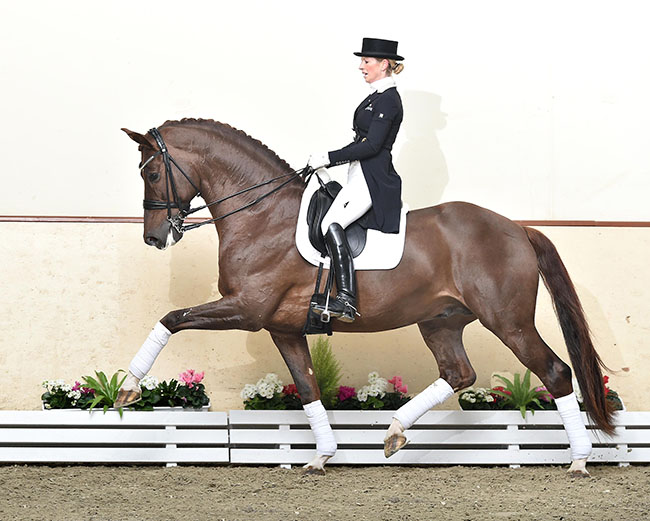
Vitalis – boom sire
It was a privilege to meet Eugène Reesink at Rotterdam CHIO, and record this interview, a whirlwind of insight and ideas, perhaps the best breeding interview I have ever recorded…
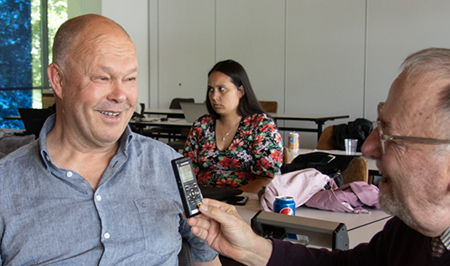
Currently two of the most popular dressage stallions – Valverde and Asgards Ibiza – are both horses you discovered…
“Yes but both are not mine any more, we had them as youngsters. Ibiza we sold when he was three years old, and Valverde we sold when he was five years old.”
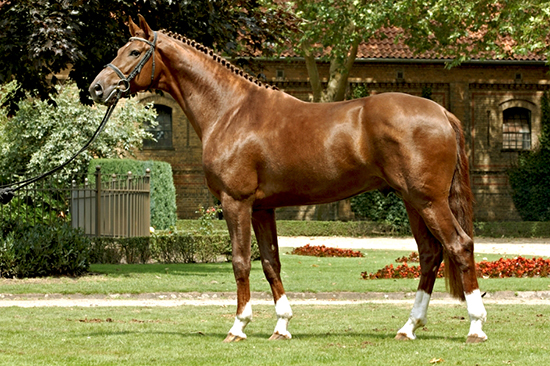
Vitalis in 2010
Let’s talk about Valverde, where did you find him?
“We were the breeders ourselves. A few years ago we owned Vitalis (Vivaldi / D-Day) and we had a couple of quite good brood mares so he was one of the few that was born when Vitalis was in the United States. We sold Vitalis to Charlotte Joost and we had some frozen semen and that’s how we produced Valverde. We have another one produced in the same time, he is a year younger, he’s called Vaderland, and he is also quite popular at the moment.”
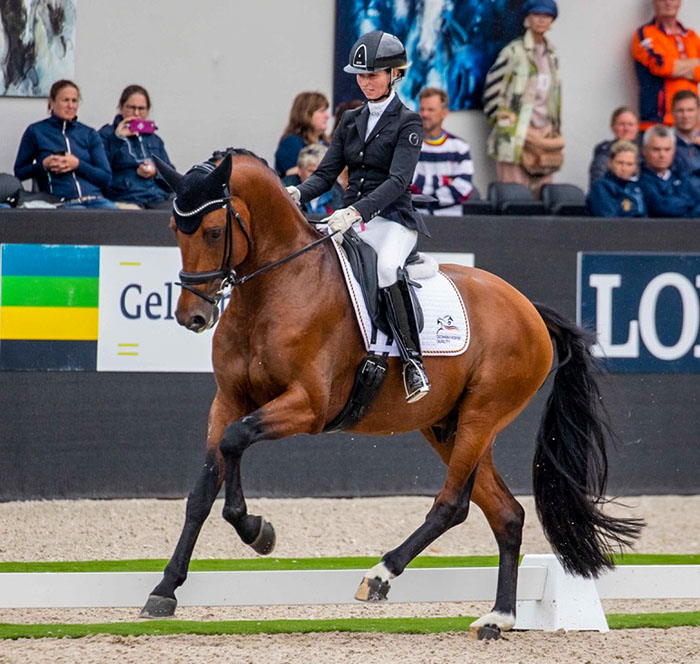
Valverde and Eva Möller at the World Young Horse Championships
Popular in Hanover…
“In the whole of Europe I think, he was breeding in the last three years more than a thousand mares, and his first offspring will come to the Stallion Show this autumn so we are waiting how it looks, but I think it looks real well for Vaderland. Vaderland is being shown by our rider Dinja van Liere.”
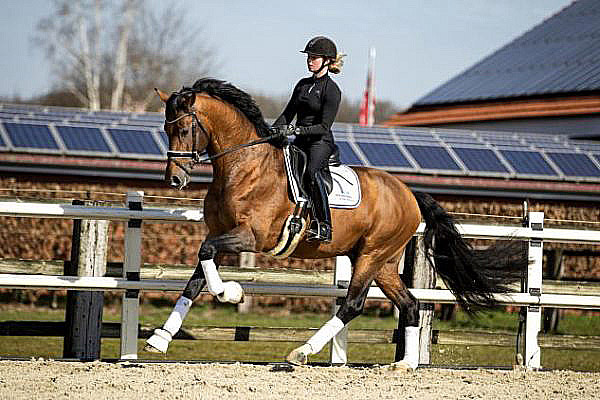
Vaderland
What to your mind makes Valverde a good stallion?
“I think in total Vitalis gives a lot of rideability to all his offspring, so also to Valverde and Vaderland, all have the same plus and minus points. You have to be a little bit careful with conformation, they can give a little bit a big head, a little bit old fashioned conformation.” (if we look at Vitalis’ pedigree, we see that his grand-dam, Naliva, carries two crosses of Pion and one of Uniform – two of the old style Dutch dressage sires – they were both by Thoroughbreds, but both out of mares by sons of Amor. The pedigree of Vivaldi reveals the heritage of the founding sires that came to The Netherlands from Holstein, two crosses of Farn and one more of Amor).
“But on the other hand they are strong, they’ve got a good hind leg, and the strongest part is their real real high rideability. They are pleased to work for you.”
Do you think that’s a change, at one stage in Holland the horses had to be more pretty, more pretty, more pretty – and at one stage I asked one of your stallion commission, why can’t you use a stallion like Breitling, oh he is too ugly – but he makes lots of Grand Prix horses…
“In the end it is a little bit what you like to breed, but in the end in the international dressage world, it is all about the rideability, that’s the most important thing. We were quite lucky with our stallions, especially the whole V line, Vivaldi, Vitalis and their offspring, all give rideability.”
And does that go back to Vivaldi? “Yeah yeah yeah, that’s where it started. And in a way it’s funny because if you see the breeding of Vivaldi, it’s Krack C, Jazz so you expect…” Crazy “And yet they are so easy, so nice to ride, it starts with Vivaldi, I am sure of that. ”
What about the other current hot stallion, Ibiza, what do you like about him?
“He’s pretty, he gives horses with a good hind leg, good movement, and also quite high rideability, I think. Once again, it’s back to Vivaldi, Ibiza is by Desperado, who is by Vivaldi. I love that line.”
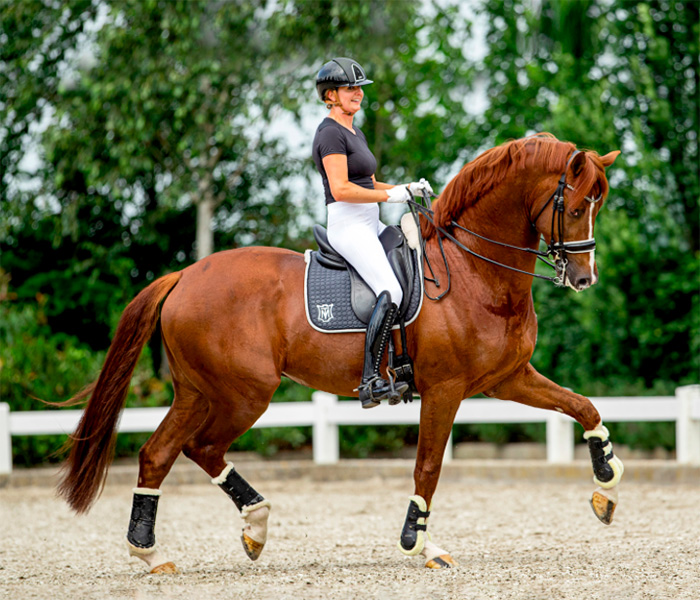
Ibiza…
For a long time, it was thought that the Dutch stallions had a weakness in the walk, have you been careful to improve the walk?
“I always was careful with the walk. We had a lot of stallions, and all of them had a good walk I think, think of Franziskus…”
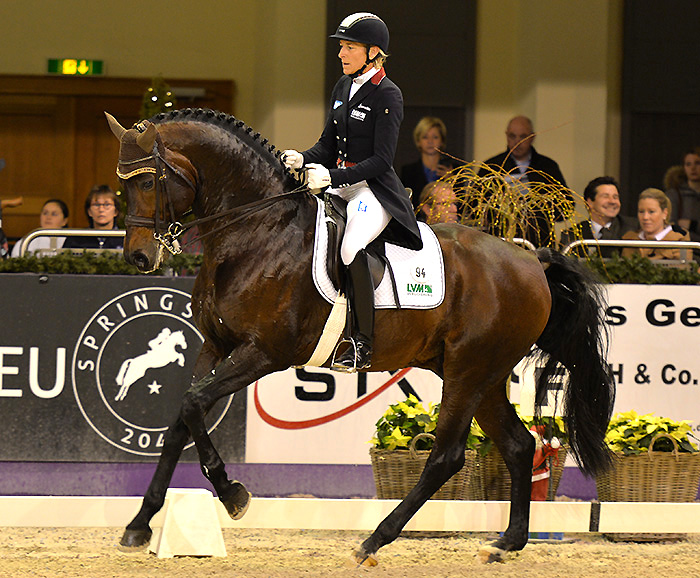
Franziskus
Where did you find Franziskus?
“I bought Franziskus as a foal. We had quite a lot of really good stallions I think, Franziskus, Ampère, Florencio, Don Juan de Hus, I think I forgot quite a lot.”
Later Eugène messaged me: The most famous stallions we produced or owned:
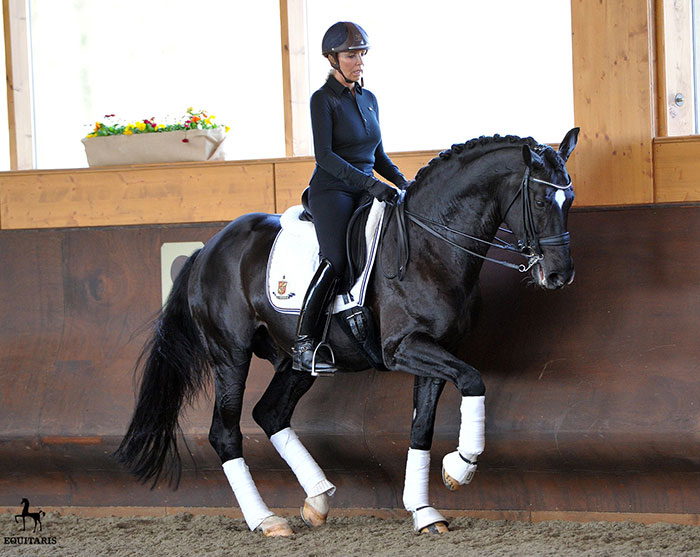
Florett’s As,
Calimero, Florett’s As, Ampère, Vitalis, Valverde, Vaderland, Franziskus, Frankie Lee, Sting, Spielberg, Schumacher, Florencio, Charmeur, Don Juan de Hus, Kaiman, Cum Laude, Darwin, Sir Oldenburg, French Kiss, Ibiza, De Beau, Rolls Royce, Rosevelt (Alison Brock), Dubrovnik, Soreldo, Samsam, Onassis, Frankie Lee, McLaren, Taurus, Follow Up, Vision, Floyd TN, Red Viper, Filou, Mauro Turfhost, Nashville Star, Dark Rousseau, All at Once.
And we sold: Ravel (Steffen Peters), Contango (Iron Spring Farm) and Verdades (Laura Graves), and for sure I am missing some horses…
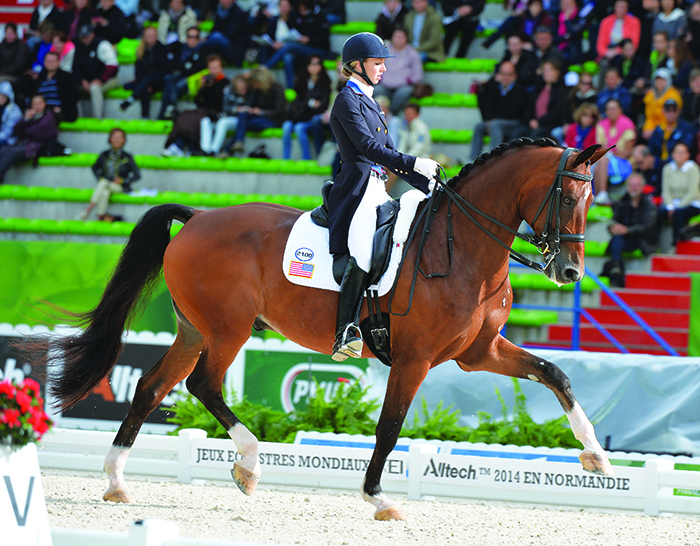
Verdades
“But we were always careful with walk, but to be honest the rideability was something I had to learn myself. In the beginning we didn’t look that much to rideability, but along the way we were learning also, and through the years we learned that rideability is real, real important.”
When did you get started in this horse business?
“As a child, fifteen, sixteen, seventeen… I was working for breeders and for myself I started when I was twenty five.”
As a rider?
“Yes, no. I found out that I was not good enough. I could do a nice third, fourth level dressage, and nice 1.20, 1.30m jumping, but not good enough to be an international rider, so we said let’s start a sales barn so that’s what we started together with my wife in 1986, 87, and my wife was more of a dressage rider that’s why we concentrated on dressage horses…”
Really the KWPN should establish some form of award for the wives who pushed the leading Dutch dealers into dressage, previously Nico Witte, and Joep van Uytert have both told me, they got into dressage because, ‘my wife was a dressage woman…’Now Eugène is singing the same tune!
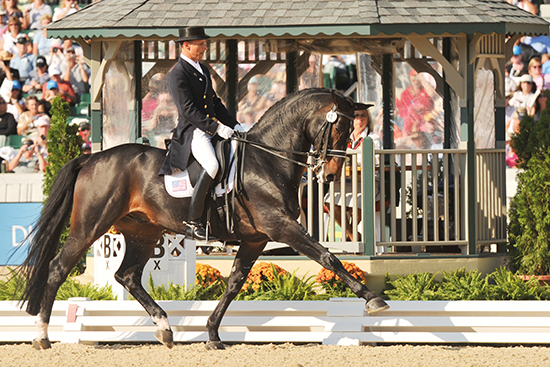
Steffen Peters and Ravel representing the US.
“We started with some jumpers, but now we are only doing dressage horses. Since two years we have started our own breeding farm, we have our own stallion station, that’s a new chapter in our lives. We grew really fast between 1990 and 2000, with a number of Americans who came to us and started to buy horses. One of the first big clients was Michael Barisone and a lot of dressage clients followed. Sue Blinks, Ally Brock, her Olympic horse came from us. We sold Steffen Peters, Ravel. We were quite successful at finding the right horses, that’s our life.
Where do you get this eye – how do you pick these horses?
“Of course we make a lot of mistakes, and that’s the biggest learning process to make mistakes and think, why did it go wrong? It’s easy to talk about our successes but I think you have to learn from your faults, of course we make faults, big faults. It helps to learn how to look at a horse, especially my wife has two things she is really keen on – the dressage horse needs to have self-carriage and a good hind leg. Those two things I learnt from her, to be real sharp on that, and as I told you we learnt rideability was real, real, real important.”
Story continues below the advertisement
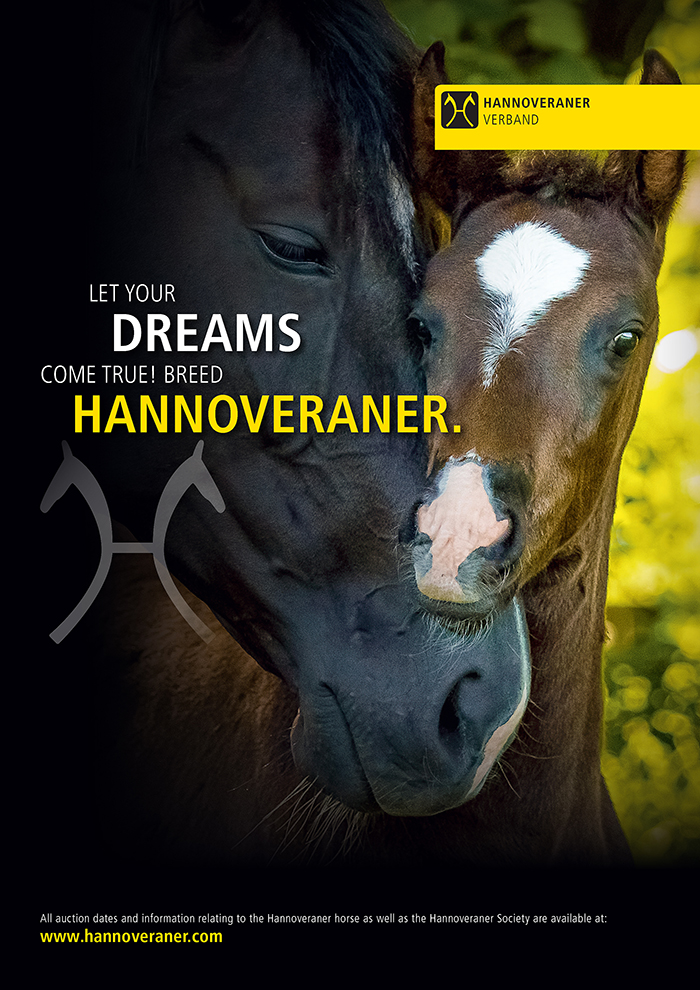
But how can you assess rideability in a foal?
“You can’t see it, I totally agree. If you know certain bloodlines, you know that one bloodline has more rideability than the other one, but it is not possible to see rideablity in a foal, even a good temperament doesn’t mean, good rideability. It’s close those two things, a good temperament, a good character. Good rideability, means hot enough, not spooky, and you can’t see that in the stable. Some bloodlines give it nearly always.”
What are the bloodlines you like to see on a pedigree?
“The ones that give rideability. All the Vivaldi offspring of course. It’s not only Vivaldi but all his sons. And of course, Contango. Rubinstein, through the years.”
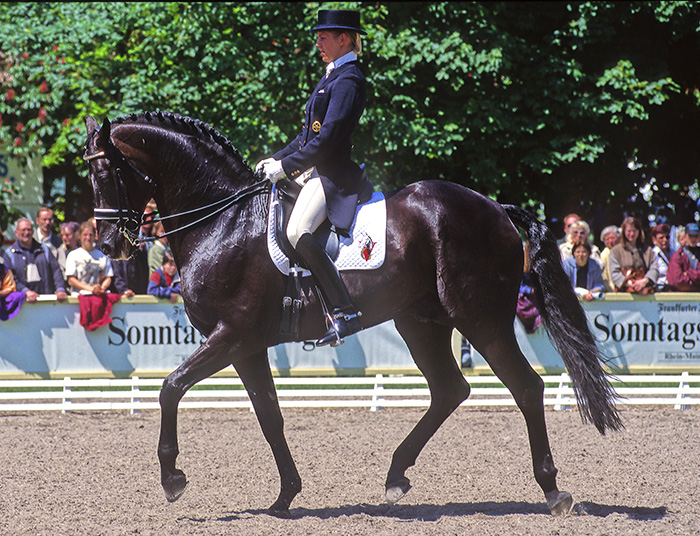
Rubinstein
But Rubinstein tended to produce wind-suckers..
“I hate that to be honest, but there are other stallions that do that too.”
Contango was an incredible influence given that he only stood in Holland for such a short time…
“I found Contango in Germany and I sold him to the Dutch owners. We were also involved in the sale of him to Mary Alice Malone. Mary Alice Malone is still a good client of ours. Over the past couple of years, she has bought three stallions from us – nice clients. She has Lowlands, still standing in The Netherlands, with Dinja van Liere. And she bought the stallions, Cum Laude (Apache / Weltmeyer) and Kaiman (Dark Pleasure / Gribaldi) from us.”
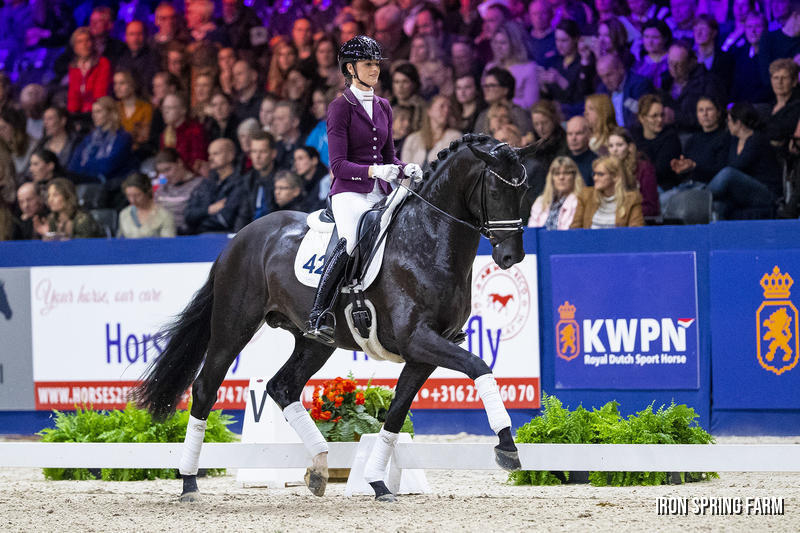
Lowlands
Did you get much affected by the WFFS hysteria, there were just a handful of dead foals but so much excitement…
“I know stallions who have it are breeding less”
Like Apache…
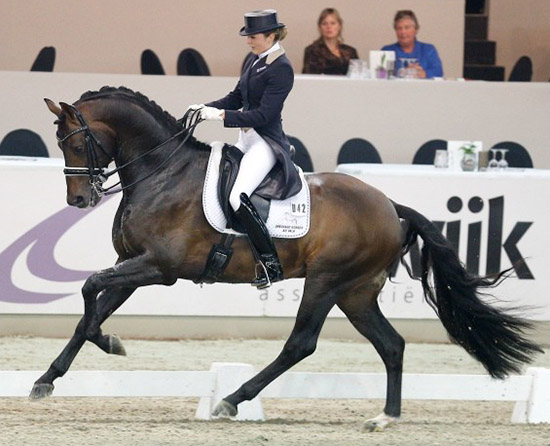
“I am a fan of Apache and I think the reaction has been really stupid, it’s totally overdone.”
Have you ever seen a foal that has had it?
“No. A horse that has WFFS can win a gold medal at the Olympics. You have to be careful if you have a stallion who is positive and a mare who is positive, then you have to be a little bit careful. I’ve not seen foals affected but it the mare has a foal and something is wrong, they drop the foal, so you don’t find out it was double WFFS, so I don’t want to be too relaxed about it, but if you are careful with the breeding – if the mare is not positive, or the stallion is not positive, then you can breed to positive, I don’t mind it.”
So if Apache was still alive today…
“I would use him absolutely. Cum Laude who I sold to Iron Spring Farm, is by Apache.”
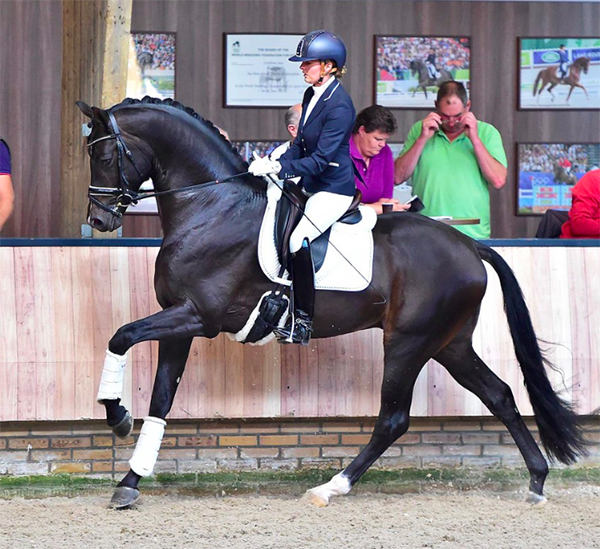
Indian Rock
Would you use Indian Rock?
“With Indian Rock I have not had that many foals to be honest, so I can’t say, but I wouldn’t say I can’t breed with him because of WFFS. I’m not looking at that, I would go for the best horse, not whether it is positive or negative. I would go for the best stallion.”
I think that’s what the real breeders say – Paul Schockemöhle offered to pay €10,000 any mare owner with an affected foal by one of his stallions, and his stallions breed so many mares but no-one has claimed the money…
“But that’s a little bit easy, if the foal is not growing up well, the mare throws out the foal already, real early, maybe six weeks, two months, so then you don’t have a dead foal. You nearly never see a foal with three eyes or five legs, it drops out already… That’s typical for horses.”
But I think when they looked at the statistics in Hanover for the positive stallions, they did not have a higher rate of abortions…
“That’s why I say it’s totally overdone. I can understand if people are a little bit careful, but if you are careful you can still use stallions with WFFS. The whole problem is much much overdone in my opinion. And there are stallions who are so good, like Apache, I like him so much. It’s so hard to find stallions of that quality, to throw them out because of WFFS is a shame for the breeding, you want to breed good horses and because of such a stupid reason, those stallions don’t breed any more.”
I look at the stallions you have produced, and many of them have quite a lot of German blood, do you go looking for that hybrid, that cross…
“It’s a little bit because I grew up near the German border. Germany is for me, three miles away. A few years ago we were looking for adventures and we tried to find clients in the US, we tried to find horses in Germany because the borders were closed at that moment between Holland and Germany. For us it was an adventure to offer the Dutch clients something new, German horses. So it was also for business that we went to Germany, and so we were doing both markets, Germany and Holland but our German influence is real real big. There are a lot of stallions of ours with German bloodlines and we made them KWPN and also approved in Germany. Vitalis, Ibiza, they were KWPN and we sent them to Germany.”
Vitalis was approved in Germany and then not approved in Holland…
“He was approved in Westfalia, he was a reserve champion. When he was two-and-a-half, I called the Dutch studbook, and they said we don’t want to see him, we have so many good Vivaldi stallions and Vitalis is just not good enough. As a four-year-old, I re-presented him under saddle in The Netherlands and they kicked him out. It’s a tough selection and it is a tough life to have stallions.”
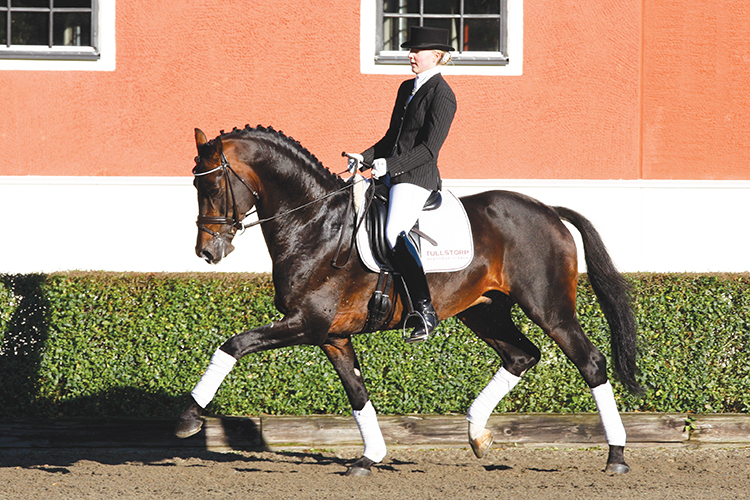
Ampére
“Ampère was first of all approved in Holland, and then he was breeding in Germany. A lot of stallions go from Holland to Germany, and a lot of German stallions come over the border into Holland.
Aside from Rubinstein, what German lines do you like – the F line?
“I love the F line. One of our first stallions was Florett As, he was by Florestan, I love Florestan. What a lot of people don’t know is that the F line had a lot of influence in Holland. If you look to Jazz, Jazz is by Purioso who is by Furioso II.”
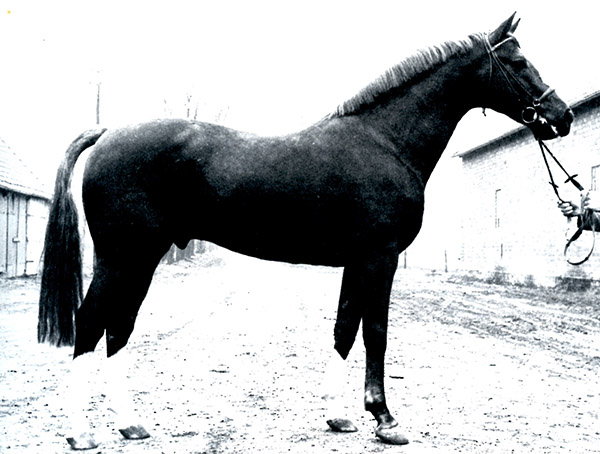
Furioso II
Furioso II was the most important stallion of them all…
“I think you must go one step back to Furioso the Thoroughbred. Furioso xx was unbelievable. If you look to the Dutch, Ulft was by Le Mexico, who was by Mexico who was by Furioso xx. Mexico and Furioso II were full-brothers, there’s so much influence of those stallions. I said, Jazz, Purioso – Jazz, Cocktail, Purioso, that’s the good line, I missed Cocktail. It’s all going back on the old F line. Ferro is also going back on that old F line, look to Germany too, how much influence that F line had.”
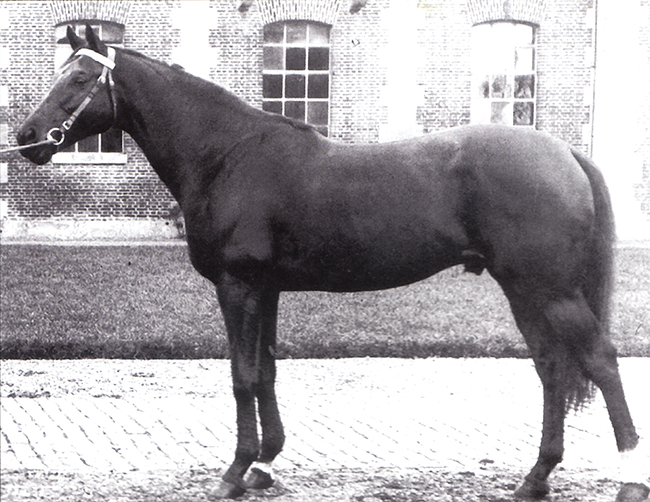
Furioso xx
And the B line, have you had much to do with that?
“We had some but not that many, I had a stallion called Brennan who was approved. I love the B line but I didn’t find the right ones.”
The B line is tricky, it’s hard to find stallions, but when they do, they are very good…
‘That’s right.”
And the D line of Donnerhall is that important for you?
“Of course, and also stallions like Sir Donnerhall.”
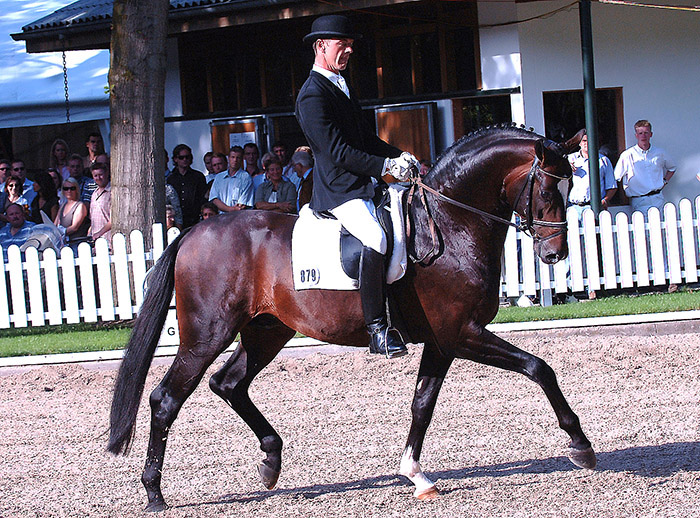
Sir Donnerhall
I was thinking about him today because he had five representatives in the Rotterdam Grand Prix, especially if you count his full-brother, Sir Donnerhall II. But you wouldn’t have thought Sir Donnerhall would produce Grand Prix horses, he was just a young horse star…
“That’s also what they said about Sandro Hit, and Sandro Hit is also real real important now. I love the S line to be honest. In Holland, the Dutch judges had a real problem with the Sandro Hits, but we loved them already. Modern types – we had the stallion, Spielberg, (by the Sandro Hit son, Sunny Boy out of a mare by Rosier by Rubinstein), one of the nicest conformations you can think of, long legs, real strong upper line, a really pretty horse. The way you have to use Sandro Hit is to make the horses more elegant, and pretty, and uphill, and that’s the strongest part of Sandro Hit. You have to use stallions on their strongest part – and not a lot of people realise that that is really important. You cannot say, use Sandro Hit – okay use Sandro Hit on a mare who can use those points.”
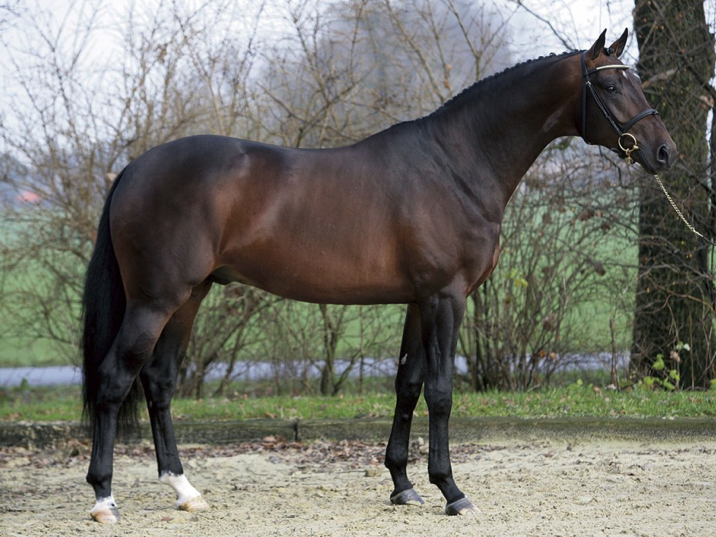
Spielberg
A mare with a good hind end…
“Exactly.”
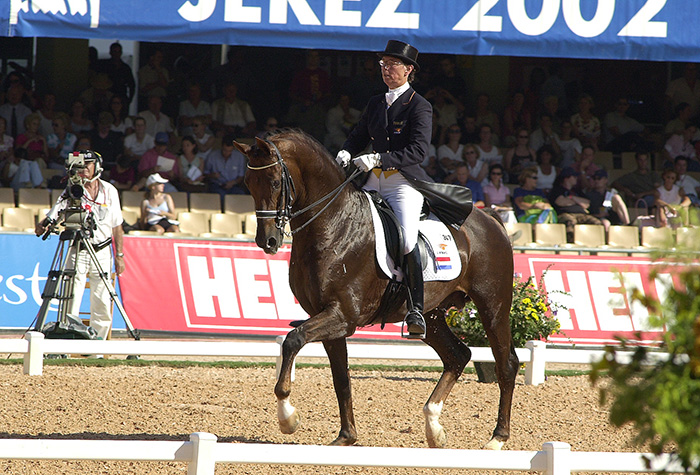
Jazz and Tineke Bartels representing Holland at the WEG in Jerez
“For example a stallion like Jazz, they criticize him on the temperament, or the front legs, but there hasn’t been a stallion that gives that much self presentation, and uphill and so much knee. So you have to use him for those parts and cross him with a mother with a real good temperament and who is totally correct on the front legs. That’s what breeding is, but for that you have to know your own mare and a lot of people don’t know enough from their mare. They just use a stallion because he is popular and not because he can help your foals. You understand the difference?”
“For example, the mother of Valverde was a real real real refined mare. And we want to have a mare with a super hind leg, and she was a little bit hot, so we said that’s ideal for Vitalis, this mare could use a stallion like that. Vitalis needs a mare with a good hind leg. The mare was refined, that’s something Vitalis needs, the mare was hot, and Vitalis gives the rideability. So there was Valverde – it’s not always that easy, but Valverde was born with an idea, a plan, it’s not just a gamble.”
What’s in the future, where do you see yourself going? I guess you are always looking for new blood and new stallions…
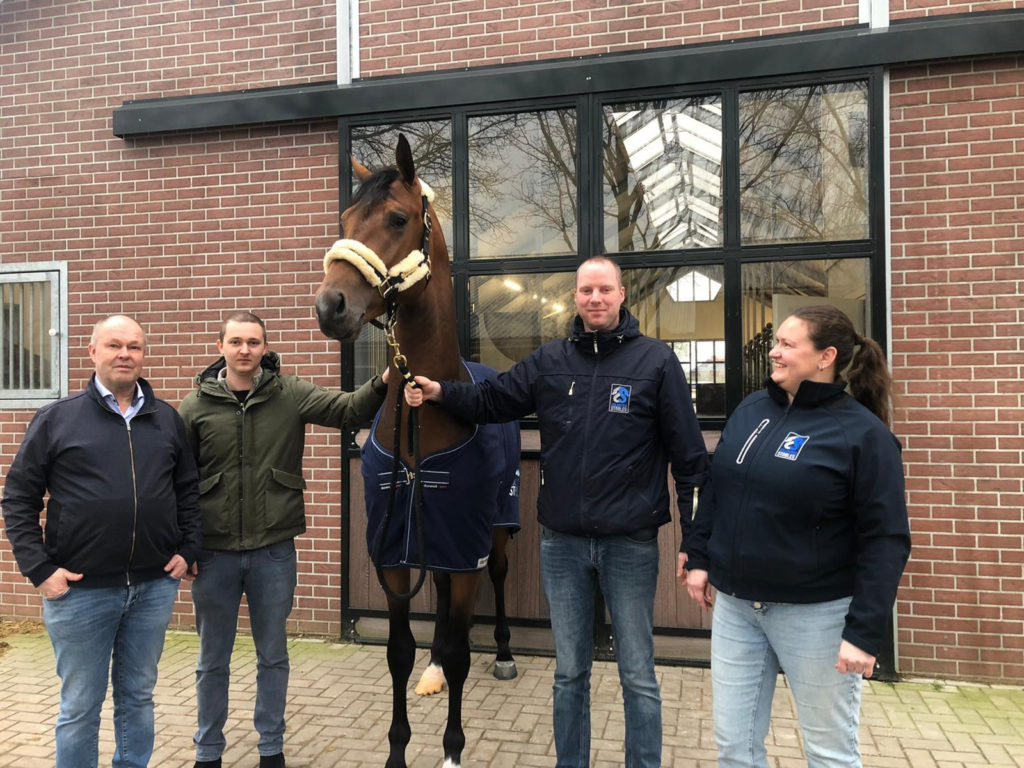
“The business we started two years ago, with our breeding station, it’s quite successful. We started to keep the horses a little while longer, so far we were always selling them three, four, five years old. With our new rider, Dinja van Liere, we can keep them a little bit longer. Next year we will go a little bit more on the German market, to sell semen, we started now in Holland, but next year we will start to sell semen in Germany and we want to have a little bit less horses, but we will try to have only the better quality – that’s hard enough, it doesn’t work always, we really try to concentrate on the better horses. I’m in the lucky position that I have a son who will continue the business…”
But you are still a young man…
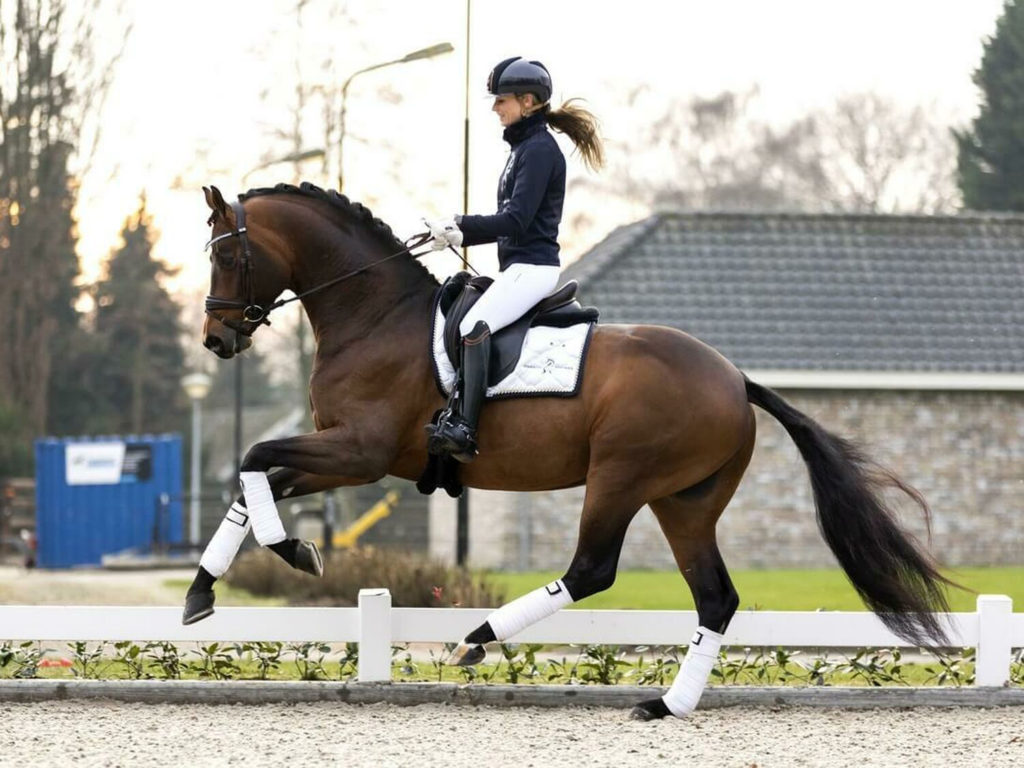
McLaren
“I’m in the best part of my life, but we know what we are doing will be continued, and that’s a nice feeling. One of our most popular stallions, who we think a lot of, is McLaren. He’s by Morricone out of a Sir Donnerhall mare. Morricone is real strange, Millenium can be tough but Morricone has a super temperament. Ingo Pape who is a good friend of mine said that the grand-mother of Morricone, was the best mare he ever saw, and he said the grand-mother and the mother, made Morricone. (Sure enough, when we look at the paper we find one of Eugène’s favourites, Rubinstein – Morricone is out of Hartima a great-granddaughter of Rubinstein, and Hartima is the daughter of Halloway, by Rubinstein out of a grand-daughter of Absatz). The rideability of Morricone comes from the mother’s side. I was surprised Morricone was so easy to ride, but Ingo taught me a lesson. He is still breeding with the mother lines of his father. That’s nice.”
“We have a Valverde out of a Jazz out of a Regazzoni, Matador, Donnerhall, Pik Koenig, and the Pik Koenig mare was the full-sister to Pik Bube I and Pik Bube II, that’s the mother line of Ingo Pape, she is one of our best brood mares, she three years old now and she is in foal to McLaren, with this mare we know exactly what stallion we need – what’s her weakness, what’s the strongest point. It’s not a gamble, then you know you are breeding with mother lines you can trust. That’s our breeding and breeding is knowing what you have, if you want to know what you have, you have to know the history of the bloodline, especially of the mother line. Good breeding is knowing what you have, and you know what you have, if you know the mother line. Mother lines you can trust, then you know what you will have. And she is now in foal to McLaren.”
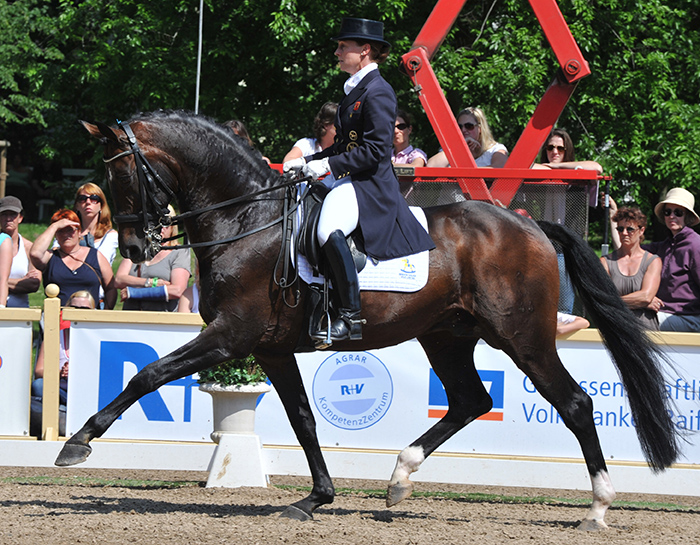
Diamond Hit competing at Grand Prix level, the stallion was a half brother to Sandro Hit
“I was in Germany, in Westfalia, and out of that mother line we had a Diamond Hit, Dubrovnik, he was the Westfalien champion and we sold him to Sissy Max-Theurer.”
Dubrovnik is out of Demona (Regazzoni / Werther) out of Demonja (by Matador) out of Desieee by Donnerhall, out of Pirola (Pik Koenig / Frustra II). Pirola was the dam of two Grand Prix horses (including Donnerschlag) and one Prix St Georges competitor.
“Ingo came to me and said where did you get this mare? And he told me the whole story about the mother line, I didn’t know it was that good. I can go further, to Der Löwe xx. Ingo Pape’s father was a really successful breeder and these were his mare lines.”
You have learnt a lot across the border in Germany…
“It was in 1980 when I was twenty years old and I went to a Westfalien mare show, and I wanted to learn more about German breeding. In those days, to go from Holland to Germany, you had to show your passport. Herr Doctor Lehmann from the Westfalien Verband came to me and I asked him if he could help me with some information, and he looked at me, and he turned around and said, we don’t need Dutch people. That was my first experience in Germany. They were tough. It was two totally different worlds, Holland and Germany at that time. The first time I went with a stallion to Germany, we had him with shoes in front. My friend who was going with me to the licensing, looked at him, and said, that is not allowed in Germany, so we took off the shoes, but the holes were still in the hoof.”
“Then Dr Lehmann came and asked, Did you ride in the Schützenfest with the horse yesterday? It was totally different, Holland and Germany, it is still a little bit different, but compared to forty years ago, in terms of the rules and the selection, nowadays everything has become so much more universal, much closer to each other. But I loved those olden times, the difference, the atmosphere, it’s now nearly everywhere, more or less the same. I don’t complain because I don’t want them to say, look at that old man, with his old stories… But back then it was an adventure, it was finding out something new.”
“Now I order semen from Denmark or France from anywhere, it is totally different, but I am happy that I grew up in a time where you know where you come from. It’s really important that you know where you come from, to know your history, and also with the mother lines – breeding is knowing history.”
Aachen in 2022, saw another page in Eugène’s remarkable history, when Cathrine Dufour won the five-star Grand Prix, on another horse that he bred – Vamos Amigos...
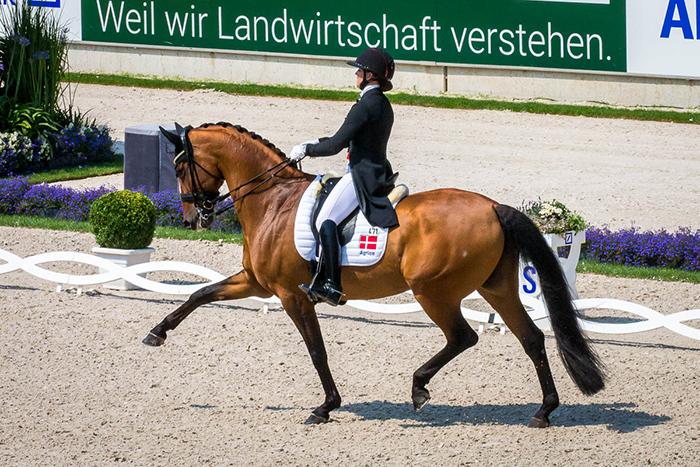
“We bought the mother of Vamos Amigos from a close friend of ours. I mostly like mares with a lot of blood, a lot of type, I prefer to breed with mares that are not too heavy, because then I can use a little bit heavy stallions. The mother had quite a lot of elegance – Hotline / Sandro Hit – so we bred her to Vitalis, and it worked out real well. Vamos Amigos was the result. We sold him when he was three years old in the Westfalien auction.”
My friend Princess Nathalie, says he didn’t look so great as a young horse…
“That’s true, he wasn’t the most beautiful horse, but he was powerful, and I think every horse looks beautiful when they use their body the right way, and Vamos Amigos is a perfect example for that. You can compare it with human dancers, if they are ugly but they move the right way, it becomes a beautiful picture, and it is the same with horses I think. ”
Did you think he would go as far as he has gone?
“We thought Vamos Amigos would be a good Grand Prix horse, but how far he has gone, I never would have expected he would go this far, a Grand Prix horse yes, but a world class horse we didn’t expect – but he is ridden by one of the best world class riders, she gives every horse a super chance, she is a really great rider. Don’t forget the rider, I am sure dressage horses are made by riders. It’s not just Vamos Amigos, it is the combination. I’m sure Vamos Amigos is one of the few horses that have all the chances in the world, not many horses have that good a rider.”
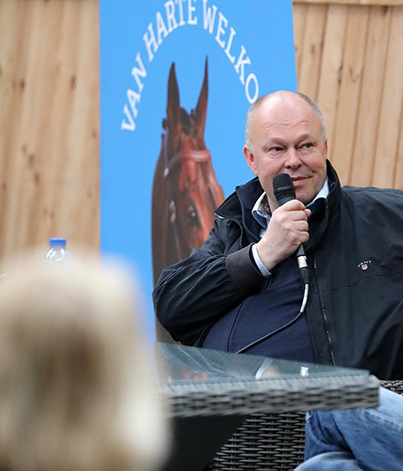
ends
Looking for a top stallion for the 2024 season in Australia? Want top European bloodlines? Go to www.ihb.com.au
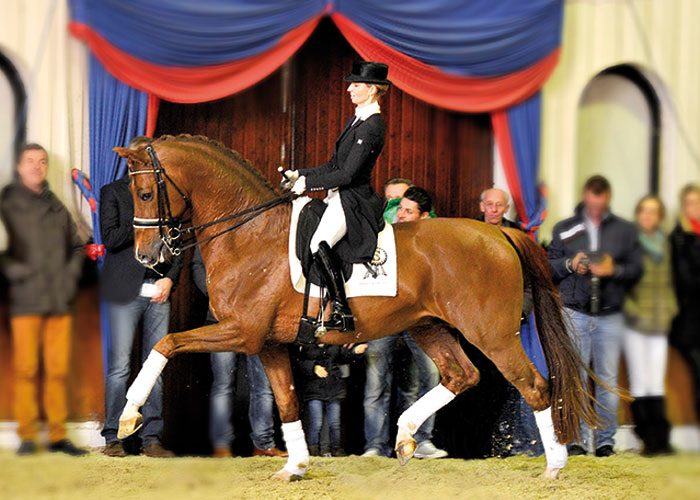
Like Vivaldi
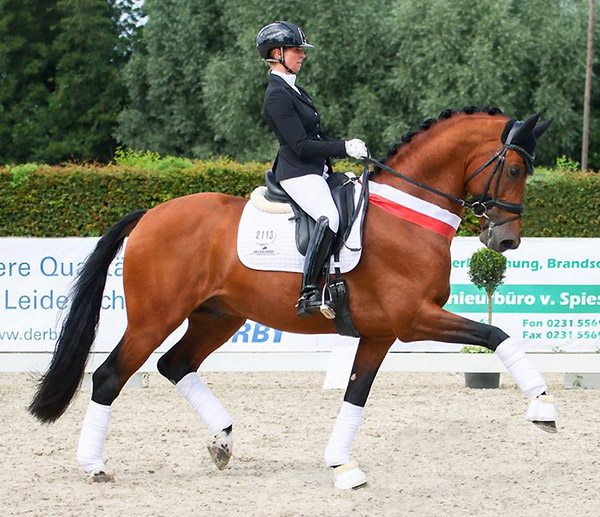
or Valverde – and many more!

Fabulous interview. Thank you.
This interview is brilliant. History. Philosophy. Humility. And so much knowledge! Really enjoyable and thought-provoking. Thank you!
Wow – what a great article and interview – Thank You so much! As a breeder there were many points of high interest since we are all aiming at that special horse – the one that will raise the bar even further.